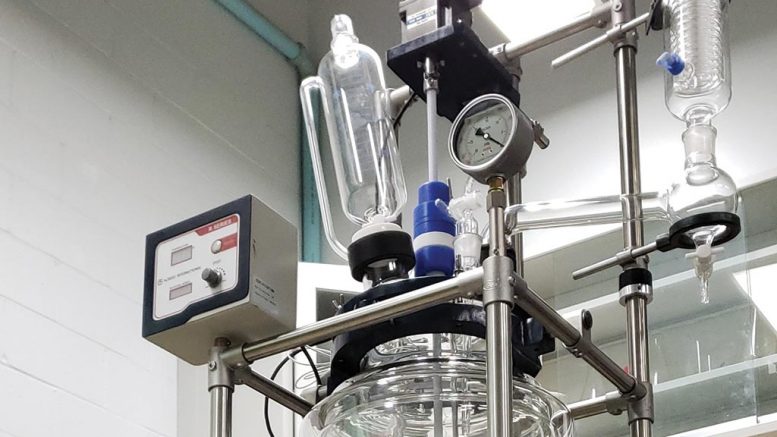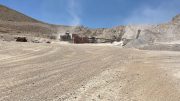Apple is using recycled rare earth elements (REE) in a key component of its newest iPhone 11 models, which hit the market in September.
The recycled REEs are employed in a part called the Taptic Engine, which allows the iPhone to mimic a physical button click. The part represents one-quarter of the REEs in an iPhone.
The move will enable Apple to secure a steady supply of the needed REEs, rather than rely on Chinese mines, which produced 70% of REE ore in 2018, according to the United States Geological Survey. A greater focus on recycling could also help protect Apple from REE price fluctuations, due to their relatively small volumes.
For now, Apple is getting the REEs from an unnamed outside supplier that retrieves them from manufacturing waste, not recycled devices. But the electronics giant is also experimenting with its own robot called Daisy, which it claims can disassemble 200 iPhones in an hour, enabling it to recover REEs and cobalt from old iPhones.
The manufacturer is one of many betting on recycling as a source of rare earth elements, and other metals like cobalt and lithium.
Mining companies that have not owned recycling operations in the past, or have focused on larger-volume metals, have also started to tap into the expected glut of these materials in waste products.
Montreal-based Geomega Resources (TSXV: GMA) secured a $1.2-million equity investment mid-year for its planned REE recycling plant. Earlier this year the junior mining company said it needed $2 million to build the plant but now targets $2.6 million, based on its front end engineering and design study. It claims that the study confirmed its in-situ recovery process — developed by its subsidiary Innord — is technically feasible and uses off-the-shelf equipment to enable scaling. Geomega said the study also confirms that its planned plant will be able to process 1.5 tons (1.4 tonnes) per shift, which could scale up to 24 hours per day, making the plant 4.5 times the scale it outlined in May 2019.

GéoMégA Resources president and CEO Kiril Mugerman speaks at the Progressive mine Forum in Toronto in October 2018. Photo by George Matthew Photography.
Canadian Li-Cycle, which received $2.7 million from the Canadian government in 2018, claims it can extract 80–100% of the materials from lithium ion batteries at its 5,000-ton-per-year (4,500-tonne-per-year) plant in Mississauga. It is now looking to build a second plant in New York State, and recently signed a memorandum of understanding with metals recycler Sungho Group, under which it plans to build a plant in South Korea.
Right on its heels, manganese mining company turned recycler American Manganese (CNSX: AMY) said in November that it had achieved a 99.98% nickel-cobalt hydroxide from the nickel-cobalt-aluminum scrap material it received from a lithium ion battery maker at its pilot project. The company has tested its pilot project and aims to begin engineering design and economic analysis of a 3- to 5-ton-per-day (2.7- 4.5-tonne-per-day) commercial demonstration plant next year.
On the other side of the world, Japan’s Sumitomo Metal Mining announced in March that it had developed a process to recover and recycle cobalt from lithium ion batteries. It had previously developed a process to recover copper and nickel from the batteries but the technical challenges of extracting the cobalt meant that this much more valuable metal was wasted in the process.

Apple’s Daisy robot, which can disassemble 200 devices per hour, removes and sorts components to facilitate recycling. Credit: Apple.
Sumitomo uses a pyrometallurgical process independent of the existing process to remove impurities and uses a hydrometallurgical process to recycle the cobalt, along with nickel and copper. It has built a pilot plant using these processes in Niihama in Japan’s Ehime Prefecture to study the process.
It’s not difficult to understand why these companies are betting on recycling. The processes have worked well for other metals like aluminum and iron, so it’s logical to hope recycling could mean less mining.
The financial and resource supply benefits are considerable.
Cobalt is mined primarily in the Democratic Republic of the Congo (DRC), which holds most reserves. Recently, the government imposed higher taxes and domestic ownership rules there that have cooled investments. Major cobalt producer Glencore (LON: GLEN) mothballed its Mutanda plant earlier this year, which was responsible for 20% of the world’s production in 2018. The DRC may back off its position but has not yet indicated a willingness to do so. The price of cobalt increased to $35,000 per ton in response, and cobalt continues to be the most expensive input in lithium ion batteries, despite the small volume required.
At the same time, most REEs come from China, which holds much of the reserves and nearly all of the global refining capacity. China imposed quotas in 2010 as part of a dispute with Japan and has hinted as recently as this year that it could do so again as part of its trade war with the United States. In both cases, REE prices climbed.
Considering that resources like cobalt and REEs are mined in relatively small volumes, are often difficult or impossible to substitute in end-uses, and come from politically sensitive regions, it may seem strange that companies are only now turning to recycling.
However, as expensive as these inputs are, the cost of recycling them, where recycling is technically feasible, could be greater.
A December 2018 report commissioned by the Government of the Netherlands to consider whether the country could access critical metals noted that recycling rates are below 1% for REEs (from all sources).
At the same time, only 5% of lithium ion batteries are recycled due to the complexity of the recycling process.
Lithium’s flammability has proven a frustrating challenge when recycling lithium ion batteries. Canadian think tank the International Institute for Sustainable Development (IISD) said in its March 2019 report on cobalt and lithium recycling that, while 99% of lead-based car batteries are collected and recycled in North America and Europe, less than 5% of lithium ion batteries are recycled.
 Workers at Glencore’s Mutanda copper-cobalt mine in the Democratic Republic of the Congo. Credit: Glencore.
Workers at Glencore’s Mutanda copper-cobalt mine in the Democratic Republic of the Congo. Credit: Glencore.
The pilot and demonstration projects underway in the industry could help improve the processing economics. Similar studies for REEs could help make recycling technically and financially viable. The U.S. Department of Energy’s Ames Laboratory has a couple such projects underway, as part of the government’s effort to secure its access to critical metals. The first process works to separate REEs in permanent magnets from the iron and boron. The second separates the REEs themselves.
However, once the technical challenges are overcome, recyclers face the problem of collecting useable waste materials. The World Economic Forum (WEF) said in a September insight report on battery value chains that the equivalent of 10 billion cell phone lithium ion batteries [and the related cell phones] will reach the end-of-life in 2030. In the same year, IISD estimated that 1.2-million electric vehicle lithium ion batteries will reach their end of life in 2030. The permanent magnets in wind turbines will eventually become a major source of waste REEs, but turbines have a long life (at least 25 years, according to the Netherlands’ report) and efforts are underway to extend those turbines’ lives.
A massive supply of waste cobalt, lithium, and REEs will exist in 2030, but collection of the waste material will be a challenge. IISD and WEF anticipate that waste smartphones will be kept from recycling streams by users who hold onto the phones for nostalgic reasons, by third-party retailers who redirect used cellphones to developing nations, and by phones ending up in the garbage, either in the country of original use, or in a secondary country. The same is true for car batteries, according to IISD and WEF.
There does not appear to be any meaningful way to address the collection challenge at this time. Most European and North American governments have regulations to encourage collection of valuable waste for recycling, but the targets have been soft, according to IISD — likely because of the technological challenges faced in recycling certain materials.
It may be that as the technology improves and demand for rare critical materials booms — with the expected increase in mobile wireless technology, electric vehicle sales and adoption of wind energy — regulations could tighten, or private companies could find the economics of recycling so favourable that they themselves incentivize and prioritize recycling. For now, however, the unreliable supply of waste material and the price volatility of these critical elements and metals could make development of large-scale facilities challenging, according to IISD.






Be the first to comment on "Mining waste for key metals"